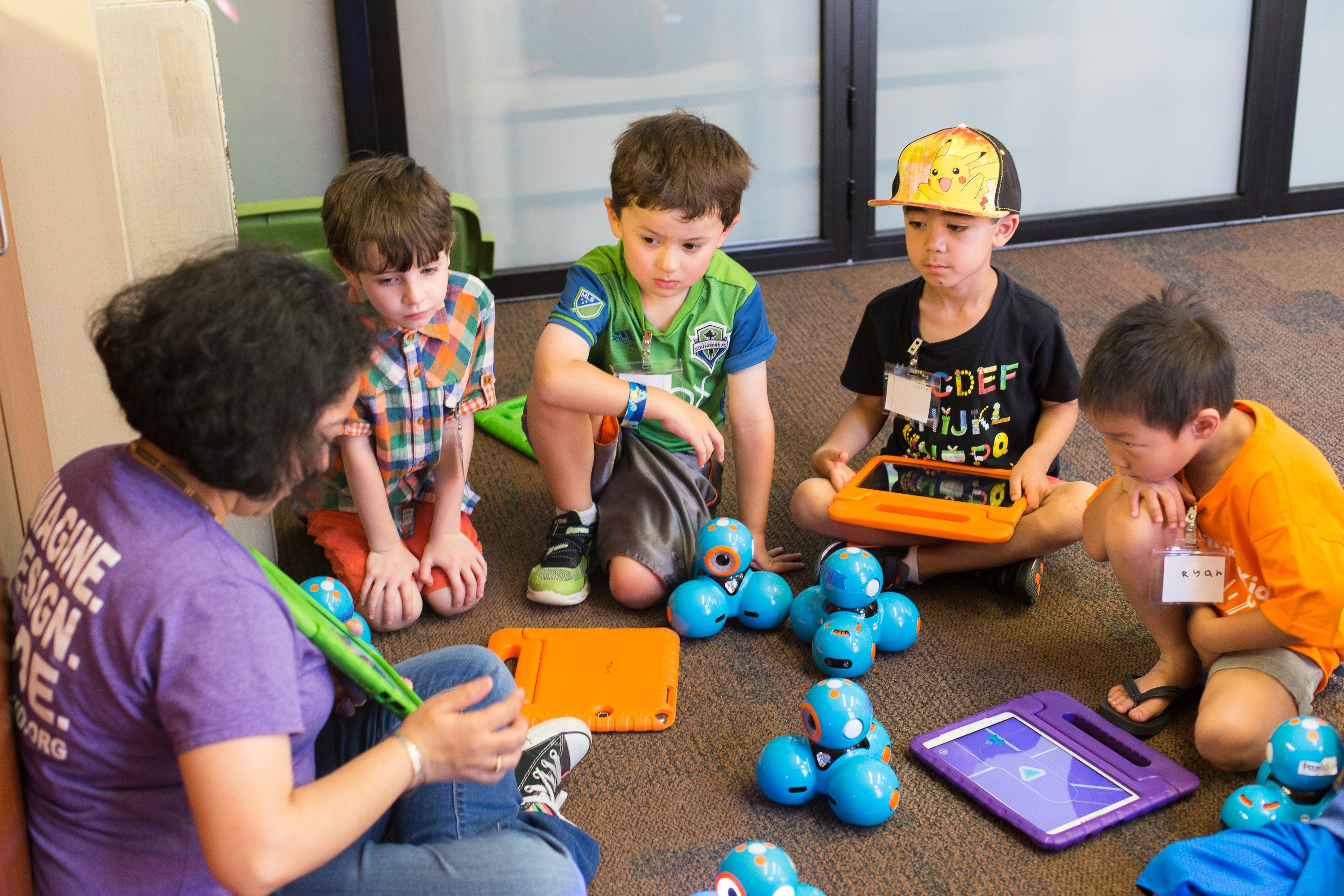
Across the nation, innovative programs are preparing students to enter the fields of science, technology, engineering and mathematics. These subjects, often called STEM, can open up new pathways to success in the 21st century workforce and also means new opportunities for students and teachers alike.
Technology can play an important role in the STEM learning process. The Office of Educational Technology, in partnership with Digital Promise, reviewed research literature on how technology can enrich STEM learning. They found nine ways that technology can help students engage with these subjects which are highlighted in this newly released report from the U.S. Department of Education— Innovation Spotlights: Nine Dimensions for Supporting Powerful STEM Learning with Technology. This report is the result of a systematic review of the current research on the impact of integrating innovative digital technology in STEM and computer science curricula and classrooms.
We hope that teachers, curriculum specialists, and other education leaders will learn how these methods can deepen students’ learning experiences. You can see these methods in action by clicking the link to each video.
1.Dynamic Representations. Students learn or master STEM concepts through interacting with digital models, simulations, and dynamic representations of mathematical, scientific, and engineering systems.
2.Collaborative Reasoning. Technology tools support students’ collaborative reasoning around STEM concepts, equalizing participation among group members and helping individuals and groups improve their ideas.
3. Immediate and Individualized Feedback. Digital tools provide students practicing or learning STEM skills or concepts with immediate and individualized feedback, beyond right or wrong.
4. Science Argumentation Skills. Students use technology that supports science argumentation skills including presenting and evaluating evidence about scientific or mathematical claims.
5. Engineering Design Processes. Students plan, revise, implement, and test problem solutions using engineering design processes and appropriate support technologies.
6. Computational Thinking. Students use technology to formulate and analyze problems and their solutions, reason abstractly, and automate procedures through algorithmic thinking.
7. Project-based Interdisciplinary Learning. Students use digital technology tools in the context of authentic project- or challenge-based learning activities that integrate multiple STEM fields (e.g., science and mathematics).
8. Embedded Assessments. Digital assessments are embedded in STEM instruction to prompt students’ reflection on the quality of their explanations, models, or problem solutions.
9. Evidence-based Models. Students use technology to develop models based on data and evidence.
The United States is making strides in STEM literacy, innovation, and employment.

Discover more About Technology with RobotLAB
Check our products catalog and discover different STEM tools that are perfect for the classroom !
Check the original article here: https://blog.ed.gov/2019/10/9-ways-tech-can-boost-stem/


